No Parisian art experience would be complete without a visit to the Musee d’Orsay, and the Musee de l’Orangerie to visit the French Impressionists.
Both museums house the many precious works of the French Impressionists we all love.
After a day at the Louvre these smaller museums seem quite manageable.
(natural light filters through the glass ceilings above my daughter)
On the left-bank of the Seine, the Musee d’Orsay was once the old train station. Upon completion of the remodel in 1980, the Museum grew to 20,000 square feet on four floors of exhibition space. It is best known for its extensive collection of impressionist masterpieces by such painters as Monet, Degas, Renoir, Cezanne and more. After standing outside in the rain, we found that security is tighter than at the Louvre, but cameras are allowed in the museum after a walk through their airport-rated metal detector.
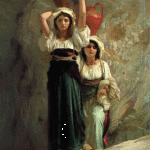 (The Girls of Alvito by Ernest Hebert)
(The Girls of Alvito by Ernest Hebert)
It is awe inspiring to be in the presence of greatness and the Musee d’Orsay is rich in artistic treasures. I got acquainted with Ernest Hebert’s evocative paintings of Italian peasants. The spirited models, dressed in traditional costume, have an almost “exotic” charm.
We visited Monet, Cezanne, Pissaro, Degas and his famous ballerinas and Vincent Van Gogh’s self portrait. My daughter and I especially were drawn to “The Floor Scrapers” by Gustave Caillebotte. The skilled artist depicted a moment in time and pulls us into the painting with his carefully planned composition. The viewer can almost smell of the curled wood shavings.
I have to admit, I really enjoy people watching about as much as viewing the art. While standing near “Whistler’s Mother” I noticed a young lady staring intently at the famous painting. Oddly, she could have passed for the younger version of Whistler’s Mother.
(do you see their resemblance?)
After meandering through the d’Orasy for half a day, it was time to cross the Seine and make our way through the formal seventeenth century Tuileries Gardens to the Musee de l’Orangerie. American tourists drew attention while riding Segways through the park as they passed the often overlooked Orangerie.
The Orangerie Museum was origianlly chosen and arranged by Claude Monet to showcase his “testamentary” waterlily masterpieces known as the Nympheas in 1927. It was closed to the public from 1999 to 2006. Newly renovated, the Museum has been described as “unique in its genre” a “haven of peaceful meditation” and “a gift to modern man with his overworked nerves.” The eight paintings are displayed in two rooms under dircet diffused light as was originally intended by Monet.
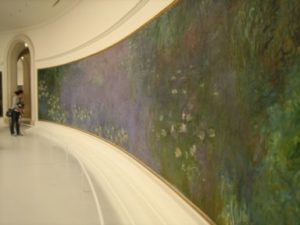
My daughter and I marvelled at the large expansive canvases. They are absolutley divine. It is amazing to note that Monet was nearly blind while he painted his final symphonies in oil on a monumental scale. The Orangerie offers a fabulous concentration of masterpieces and highly original insight into modern art featuring Cezanne, Renoir, Picasso, and Gogan.
Au Revoir ~Lori 🙂
You might enjoy some of these other art travel articles:
How to Pack For Painting – Tips for the Painter Traveling by Airplane or Car
Plein Air Painting with Utah’s Finest
Painting and Playing in Provence
New Zealand: Play and Painting in “The God Zone”
Water Mixable Oil Paints: Facts, Tips and Why I Use Them
Sun Valley, Idaho: Small Town with a Big Art Attitude!
Build a Pochade Box from a Cigar Box


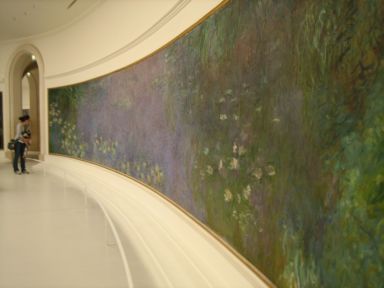
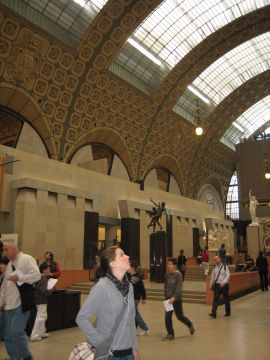

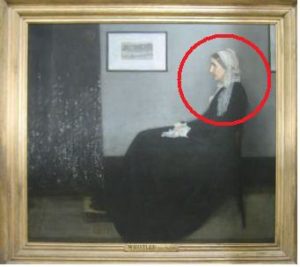
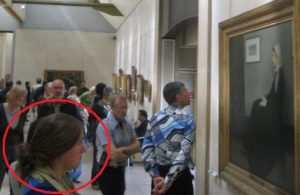

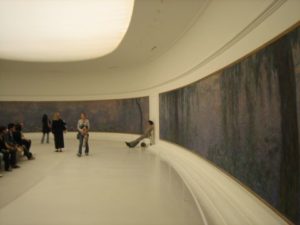






Thanks so much for sharing this! It is unlikely I’ll ever get to Paris,(I’m pretty much an armchair traveller) but I really enjoyed see a bit of the museums through your eyes.
Hello Lori,
What a nice travel blog. I’ve been to these places and especially enjoy hearing your exciting messages.
Sandra
“Raboteurs de parquet” / “The Floor Scrapers” is one of my favorite paintings in the d’Orsay. One other painting I like there is “le lit” / “The Bed” by Toulouse-Lautrec. And the d’Orsay is one of my favorite museums in Paris!
I haven’t yet been to the Orangerie. Next trip!
It looks like you had a great time exploring the Impressionists.
thank you for this post. it is such a wonderful place, i hope i can visit the louvre myself one day.
+ i saw the Young-lady-”Whistler’s Mother” … amazing photo shot…like a time travel.
i ♥ your art
and thank you for sharing your knowledge about it.